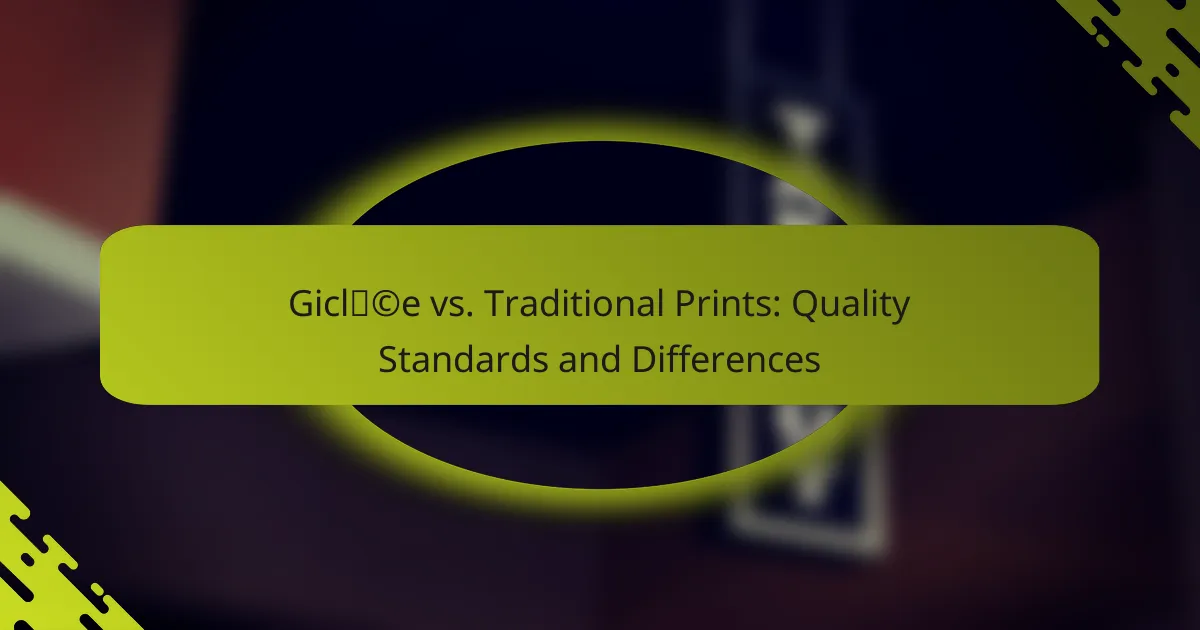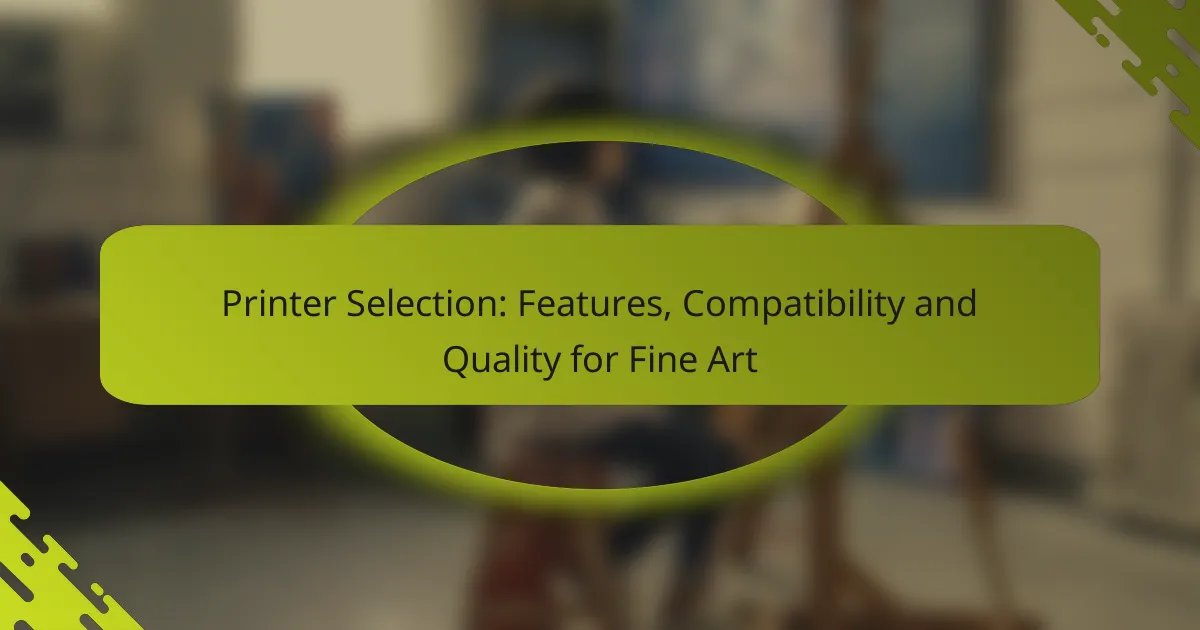When comparing Giclée and traditional prints, the differences in quality are notable, largely stemming from the materials and techniques employed in their creation. Giclée prints are renowned for their exceptional longevity and color accuracy, often preferred by artists and collectors for their durability and vibrant detail. In contrast, traditional prints may be more budget-friendly but typically lack the same level of archival quality and color fidelity.

What are the quality differences between Giclée and traditional prints?
The quality differences between Giclée and traditional prints are significant, primarily due to the materials and techniques used in their production. Giclée prints typically offer superior longevity and color accuracy compared to traditional prints, making them a preferred choice for artists and collectors.
Giclée prints use archival ink and paper
Giclée prints are produced using high-quality archival inks and papers that are designed to last for decades without fading. These inks are pigment-based, which provides a wider color gamut and better lightfastness compared to dye-based inks commonly used in traditional printing.
The paper used for Giclée prints is often acid-free and made from cotton or other archival materials, ensuring that the prints maintain their integrity over time. This combination of materials results in prints that can last 100 years or more under proper conditions.
Traditional prints often use lower-quality materials
In contrast, traditional prints frequently utilize lower-quality inks and papers that may not be designed for longevity. Many traditional printing methods, such as offset printing, use dye-based inks that can fade significantly faster, often within a few years.
The paper used in traditional prints may contain acids or other chemicals that can cause deterioration over time. As a result, these prints may not hold up as well against environmental factors like light and humidity, leading to a shorter lifespan compared to Giclée prints.
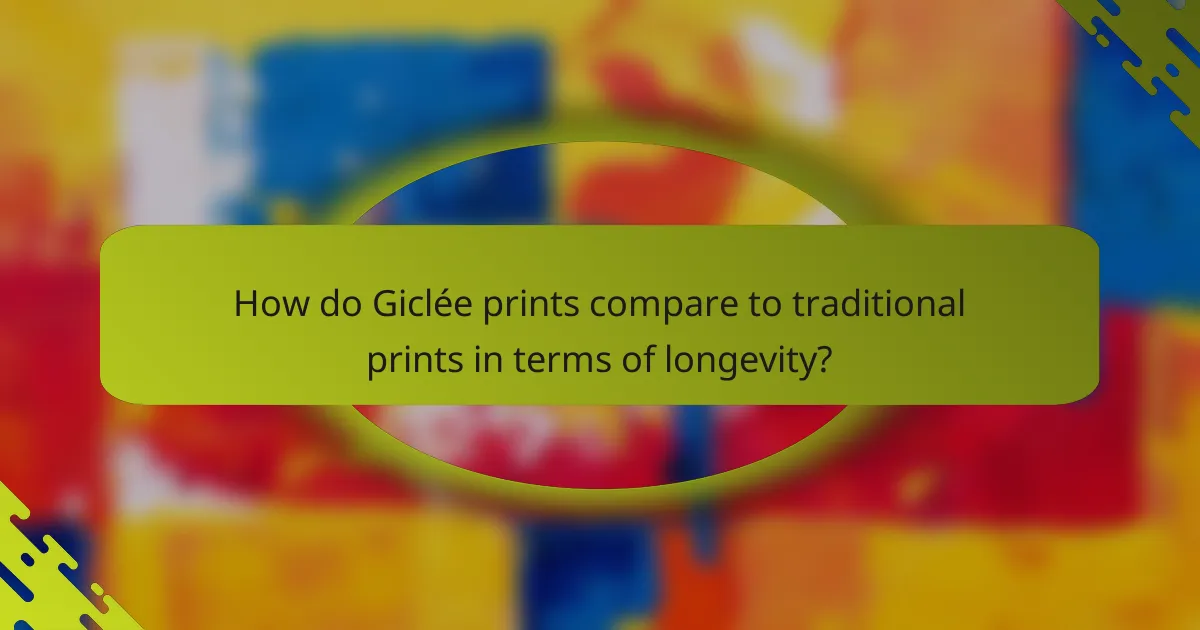
How do Giclée prints compare to traditional prints in terms of longevity?
Giclée prints generally offer superior longevity compared to traditional prints, often lasting over a century with proper care. This durability is primarily due to the high-quality inks and archival papers used in the Giclée printing process.
Giclée prints can last over 100 years
Giclée prints are created using pigment-based inks on acid-free paper, which significantly enhances their lifespan. When stored and displayed correctly, these prints can maintain their color and quality for over 100 years, making them a preferred choice for artists and collectors.
To maximize the longevity of Giclée prints, consider using UV-protective glass when framing and avoid direct sunlight exposure. Regularly check the condition of the print and store it in a controlled environment to prevent deterioration.
Traditional prints may fade within a few decades
Traditional prints, especially those made with dye-based inks, can begin to fade within a few decades. Factors such as light exposure, humidity, and temperature fluctuations can accelerate this fading process, leading to a noticeable decline in quality over time.
To extend the life of traditional prints, keep them out of direct sunlight and in a stable environment. Using protective coatings or framing methods can also help, but they may not fully prevent fading as effectively as Giclée prints.

What are the cost differences between Giclée and traditional prints?
The cost differences between Giclée and traditional prints are significant, with Giclée prints typically commanding higher prices due to their advanced printing technology and superior quality. Traditional prints, on the other hand, usually have lower upfront costs, making them more accessible for budget-conscious buyers.
Giclée prints are generally more expensive
Giclée prints can range from moderately priced to quite expensive, often starting in the low hundreds of USD depending on the size and quality of the print. The higher costs stem from the use of archival inks and high-resolution printing techniques that ensure longevity and detail. Artists and galleries often price Giclée prints to reflect the investment in materials and technology.
When considering Giclée prints, it’s essential to evaluate the artist’s reputation and the print’s intended use. For collectors, the higher price may be justified by the potential for appreciation in value over time.
Traditional prints offer lower upfront costs
Traditional prints, such as lithographs or screen prints, generally have lower upfront costs, often available in the range of tens to hundreds of USD. These prints are produced using established methods that may not require the same level of investment in materials as Giclée prints. This makes them a popular choice for those looking to decorate on a budget.
However, while traditional prints may save money initially, they may not offer the same durability or color fidelity as Giclée prints. Buyers should consider the long-term value and quality when choosing between these options.

What are the best uses for Giclée prints?
Giclée prints are ideal for high-quality reproductions of artwork, offering vibrant colors and fine detail. They are particularly suited for artists and photographers looking to produce limited runs of their work with exceptional fidelity.
Fine art reproduction
Giclée printing is widely used for fine art reproduction due to its ability to capture the nuances of original artworks. The process utilizes high-resolution digital scans and archival-quality inks, ensuring that colors remain true to the original piece. Artists can produce prints that closely resemble their work, making it accessible to a broader audience.
When considering fine art reproduction, it’s essential to use high-quality paper that complements the artwork. Options like acid-free, cotton rag paper can enhance the longevity and appearance of the print. Additionally, artists should ensure that their digital files are of sufficient resolution, typically at least 300 DPI, to maintain clarity in the final product.
Limited edition artworks
Limited edition Giclée prints are a popular choice for artists who want to create exclusive offerings. By limiting the number of prints produced, artists can increase the perceived value and collectability of their work. Each print is often numbered and signed, adding a personal touch that appeals to collectors.
When producing limited edition prints, artists should establish a clear edition size and communicate this to potential buyers. It’s common to limit editions to a range of 50 to 500 prints, depending on the artist’s reputation and demand. Additionally, consider including a certificate of authenticity to further validate the print’s value and uniqueness.
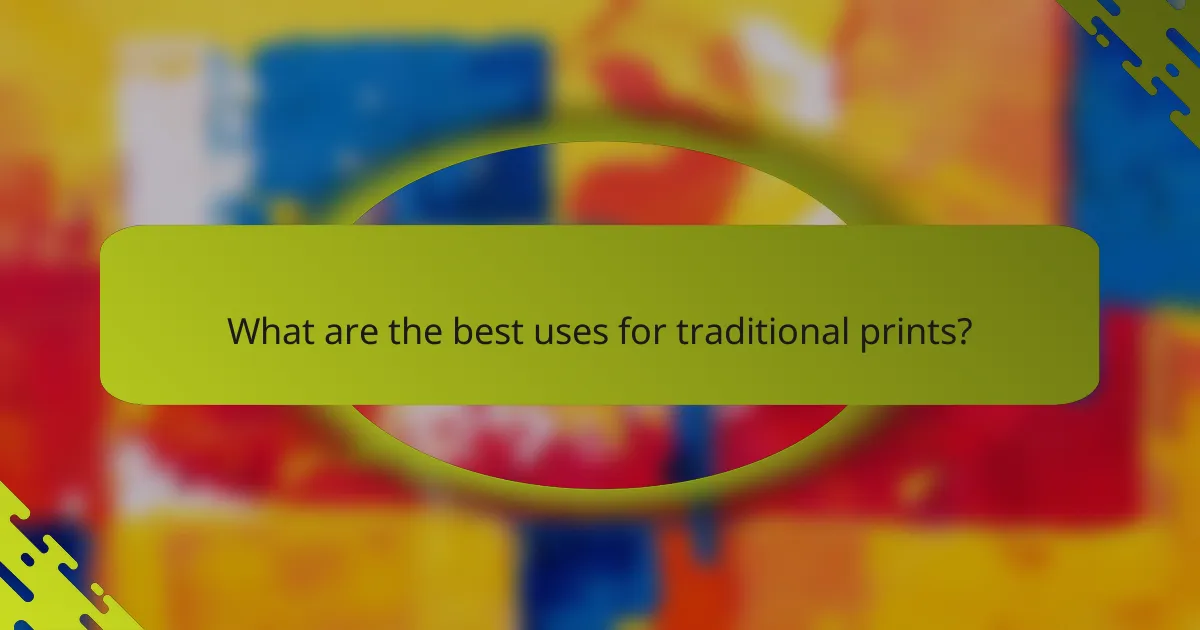
What are the best uses for traditional prints?
Traditional prints are ideal for mass production and budget-friendly art options, making them accessible for various applications. They are often used in settings where high volume and lower costs are prioritized over fine art quality.
Mass production of posters
Traditional prints excel in the mass production of posters, where large quantities are needed quickly and affordably. They are commonly used for advertising, events, and educational purposes, allowing for vibrant colors and clear images at a lower cost per unit.
When producing posters, consider the printing method, such as offset printing, which is efficient for high volumes. Ensure that the design is optimized for print to maintain quality across all copies.
Budget-friendly art options
For those seeking affordable art, traditional prints offer a great solution. They can be found in various styles and sizes, making it easy to decorate spaces without significant financial investment.
Look for prints from local artists or online marketplaces that specialize in reproductions. This approach allows you to enjoy art while staying within a budget, often costing significantly less than original pieces or giclée prints.

What factors should you consider when choosing between Giclée and traditional prints?
When deciding between Giclée and traditional prints, consider factors such as intended use, display environment, budget, and the long-term investment value of the artwork. Each printing method has distinct characteristics that can affect quality, durability, and overall aesthetic appeal.
Intended use and display environment
The intended use of the print significantly influences your choice between Giclée and traditional prints. Giclée prints are often preferred for fine art displays, galleries, or personal collections due to their high resolution and color accuracy. In contrast, traditional prints may be suitable for everyday use, such as posters or casual decor.
Additionally, consider the display environment. Giclée prints, made with archival inks and papers, are more resistant to fading, making them ideal for bright or sunlit spaces. Traditional prints may not hold up as well in such conditions, potentially leading to quicker deterioration.
Budget and investment value
Budget plays a crucial role in choosing between Giclée and traditional prints. Giclée prints typically come at a higher price point due to their superior materials and printing technology. Expect to invest more for a Giclée print, especially if it is produced in limited editions.
On the other hand, traditional prints are generally more affordable, making them accessible for casual buyers. However, consider the long-term investment value; Giclée prints can appreciate over time, particularly if created by recognized artists. Weighing initial costs against potential future value is essential for making an informed decision.
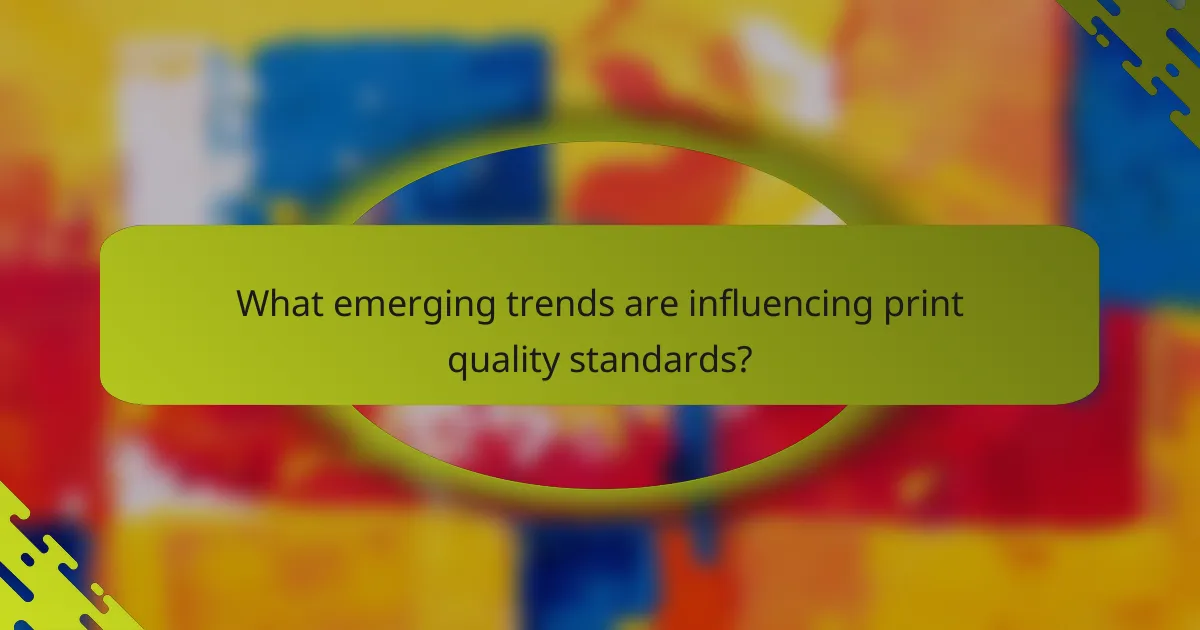
What emerging trends are influencing print quality standards?
Emerging trends in print quality standards are largely driven by advancements in technology and changing consumer preferences. As digital printing techniques evolve, they enable higher resolution and more vibrant colors, pushing traditional print methods to adapt.
Advancements in printing technology
Modern printing technology has significantly improved the quality of both giclée and traditional prints. Innovations such as inkjet printing, which uses microscopic droplets of ink, allow for finer detail and a broader color spectrum compared to older methods like lithography.
Additionally, the introduction of archival inks and specialty papers has enhanced the longevity and durability of prints. Giclée prints, for instance, often utilize pigment-based inks that resist fading for decades, making them a preferred choice for artists and collectors.
When considering print quality, it’s essential to evaluate the type of printer used, the quality of inks, and the paper’s characteristics. Investing in high-quality materials can significantly impact the final product, ensuring it meets modern standards for both aesthetics and durability.






